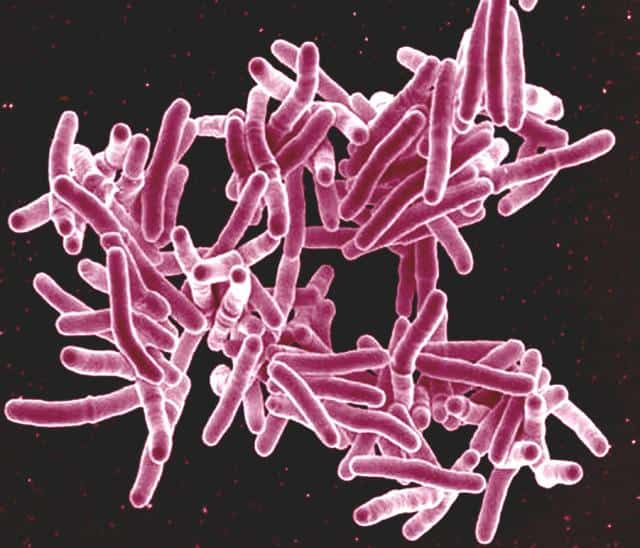October 21, 2016

A weekly roundup of news on drug resistance and other topics in global health.
Antibiotic prescriptions for urinary tract infections are all too common in hospitals and nursing homes, writes Neil Gaffin, MD, on the CDDEP Blog. Pyuria—the presence of white blood cells in urine—is a generally benign manifestation of aging, though it reflexively drives healthcare providers to prescribe antibiotics. The CDC estimates that 80 percent of nursing home residents receive at least one course of antibiotics each year and that up to 75 percent of those prescriptions are unnecessary. [CDDEP]
Quality standards in development for treating respiratory infections in Vietnam would avoid antibiotic overprescribing. The Oxford University Clinical Research Unit (including Global Antibiotic Resistance Partnership collaborators) and the Vietnamese MOH convened a working group to recommend evidence-informed guidelines for treating community-acquired pneumonia and acute exacerbations of chronic obstructive pulmonary disease. The group began with international guidelines and adapted them to the local context, reporting to an MoH committee in June 2016. That committee identified some additional steps needed before the guidelines can be finalized, but agreed on most of the recommendations. The ongoing development is reported in The Lancet as an example of a national process to develop the best possible guidelines under challenging conditions, where patients have access to antibiotics without medical advice, and where surveillance is less than adequate to define the local epidemiology of infections and antibiotic resistance. [The Lancet]
UNICEF secured five-strain vaccine at lowest-ever price, to be sent to 80 countries in the next three years. Six vaccine suppliers will offer the vaccine at an average of 84 cents per dose, half the price that the UN agency currently pays. More than $366 million in savings is expected for donors and governments. UNICEF will supply 450 million doses of the vaccine to 80 countries, with 400 million doses designated for Gavi-supported and transitioning countries. The pentavalent vaccine protects against diphtheria, tetanus, pertussis, hepatitis B and Haemophilus influenzae type b. According to Shanelle Hall, Director of UNICEF’s supply and procurement headquarters, “Today’s announcement demonstrates that partnerships can bring affordability and price sustainability to the table in supplier discussions, and this is transforming health outcomes for children.” [UNICEF]
Four cases of extensively drug-resistant tuberculosis (XDR-TB) have been identified in Romania, according to a report from the European Centre for Disease Prevention and Control (ECDC). Extensively drug-resistant tuberculosis is caused by a strain resistant to fluoroquinolones, as well as at least one of three second-line injectable antibiotics, and can be virtually untreatable, depending on the capacity of the health system and the patient’s immune response. According to the ECDC, the main drivers of resistance in TB are intermittent drug use, errors in prescription, poor adherence to treatment and low quality of TB drugs. The cluster of four XDR-TB cases involves students attending the University of Medicine and Pharmacy in Oradea Municipality, Bihor County, Romania, and more cases may be expected in association with the cluster. [CIDRAP, ECDC]
In the European Union, the total burden of six healthcare-associated infections is higher than all other communicable diseases under surveillance, combined. In a study published in PLOS Medicine, European researchers estimated the prevalence of healthcare-associated infections (HAIs) in 2011-2012 at more than 2.5 million cases annually, corresponding to approximately 2.5 million disability-adjusted life years (DALYs) each year for six common types of HAI: pneumonia, urinary tract infections, surgical site infections, Clostridium difficile infections, neonatal sepsis, and primary bloodstream infections. The model used by the authors builds on the methodology of the Burden of Communicable Diseases in Europe (BCoDE) project. According to the authors, “Our model should allow for estimations of the potential benefit of preventive measures on the burden of HAIs in the EU/EEA.” [PLOS Medicine]
UK National Health Service (NHS) pharmaceutical suppliers include Indian companies whose factories are responsible for antibiotic pollution, according to The Bureau of Investigative Journalism. Wastewater from pharmaceutical companies often contains active antibiotic ingredients, which has been linked to the spread of antibiotic resistant infections. Bacteria resistant to antibiotics manufactured at a number of factories that supply the NHS were detected in factory effluent, with the highest level of resistant bacteria found in samples at a factory managed Aurobindo Pharma. Seventy percent of E. coli from that site were resistant to fluoroquinolones, which are critically important in human medicine. [TBIJ]
Sales of veterinary antibiotics have decreased in European Union, though use of antibiotics important in human medicine has risen. The sixth report from the European Surveillance of Veterinary Medicine of the European Medicines Agency (EMA) indicates that between 2011 and 2014, in the 25 countries studied, the total sales of antimicrobial veterinary products decreased by 2.4 percent. The use of antibiotics critically important in human medicine—macrolides, fluoroquinolones, and polymyxins—rose by 13, 14 and 19 percent, respectively, increasing to record levels. According to the EMA, “Despite low overall decrease in sales of veterinary antimicrobial products, data demonstrate that actions taken in the fight against antimicrobial resistance by the Member States are making a difference.” Some critics warn that the news is not all good. The Alliance to Save Our Antibiotics, for instance, is concerned that the decline is too little, noting that animal use of antibiotics in Europe is more than twice that in humans. [CIDRAP, EMA]
Image via NIAID (CC BY-SA 2.0)











